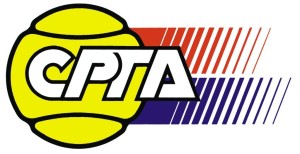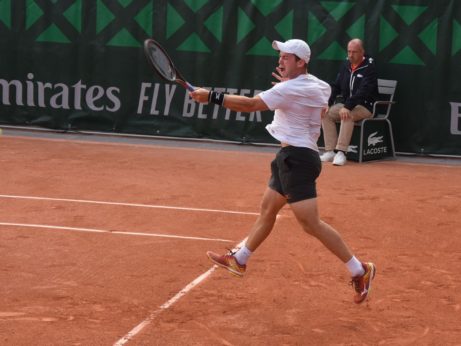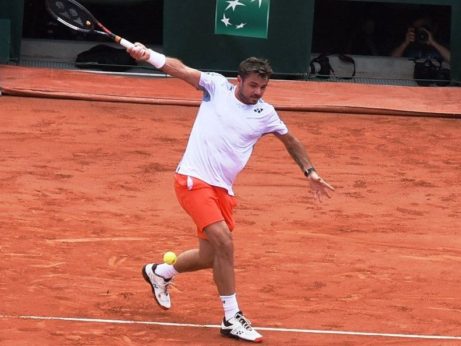Denis Shapovalov – Powerful 1st service 3.0

Young left-handed Canadian talent of Russian-Ukrainian origin Denis Shapovalov (*1999 / CAN) who was born in Tel-Aviv in Israel and declares Nassau in the Bahamas as his residency came to the spotlights in 2017. First, it was with his sudden anger outburst during the February Davis Cup match of Team Canada against Great Britain when a ball fired from his racket after a lost point seriously injured the French chair-umpire in the eye area and caused him such a significant injury that a reparative surgery was necessary. Later in 2017, Denis continued on a more positive note when he defeated in a dramatic 3-set match the big Rafael Nadal (ESP) during the Canadian Open in Montreal where he subsequently made it all the way to the semifinals. Shapovalov then backed up that result at the US.Open a few days later as he was able to win 6 consecutive matches (3 in the qualification and 3 in the main draw) there before falling to Pablo Carreno Busta (ESP) in the round of the last 16. Mainly at these two tournaments, Denis showed why he is being considered as one of the biggest young talents of the tennis world. After these highlights, which were followed by two won matches in the Davis Cup play-off against India, the rest of 2017 was rather uneventful as Denis was able to win just one more match on the ATP Tour level only.
Shapovalov who is currently (January 15, 2018) ranked as ATP #50 was able to capture 4 Features and 2 Challenger level titles among men so far, the biggest title ever won by him was the singles crown at the 2016 Junior Wimbledon. He lists his mom Tessa, who also tried the tennis tour in the 90’s a bit, as one of his coaches besides the Canadian Davis Cup captain Martin Laurendeau who took over his coaching in 2017. Besides quite solid technique and almost an ideal tennis body, huge dynamic power and high intensity can be considered as Denis’ biggest assets. From the strokes, the service belongs to one of Shapovalov’s strengths, but small improvements (part of the Tennis 3.0 Code seems to be missing) could probably make this leftie service to an even more of a constant weapon. Needless to say, already now, his service stats are better than the ones of the fellow rising stars of Russian origin Alexander Zverev (GER) and Andrey Rublev (RUS), which are both 2 yours older than Denis and ranked higher. Below, I am showing some of Denis’ services at both the 2017 French and the 2017 US.Open. The opening of the racket face on its way to the cocking position (waiter’s palm/tray) and quite a big glenohumeral angle (should be under 120° to reduce the risk of the rotator cuff problems) during the impact are in my personal opinion certain risk factors, which could increase the risk of a potential injury and which might also partly limit the optimal form of the targeted pronation and exact unloading.

Denis Shapovalov (*1999 / CAN) – 1st service 3.0 in a pre-match warm-up – 1 of 5 – push-off – racket face is opening behind Denis’ back (waiter’s tray/palm) on the way to the cocking position, this can be considered as a certain risk factor as the loading of the muscles around the shoulder is in this case a bit different – 2017 French Open Qualification – Paris / France – May 2017

Denis Shapovalov (*1999 / CAN) – 1st service 3.0 in a pre-match warm-up – 2 of 5 – impact – at the highest possible point – huge extension and very significant (one of the biggest on the tour) elevation of the center of gravity, but the eyes are looking a bit too early away from the impact zone, also the glenohumeral angle is rather too big – 2017 French Open Qualification – Paris / France – May 2017

Denis Shapovalov (*1999 / CAN) – 1st service 3.0 in a pre-match warm-up – 3 of 5 – follow through 1 aka targeted pronation – rotation energy from the body was unloaded against the target, palm points to the outside for quite long – 2017 French Open Qualification – Paris / France – May 2017

Denis Shapovalov (*1999 / CAN) – 1st service 3.0 in a pre-match warm-up – 4 of 5 – landing/follow through 2 = relaxation – high kick with the left leg as counterbalance – 2017 French Open Qualification – Paris / France – May 2017

Denis Shapovalov (*1999 / CAN) – 1st service 3.0 in a match warm-up – 5 of 5 – landing 2 – racket is slowly coming back towards the ready position – as this is just a warm-up, there is no urgency with the preparation for the next stroke – 2017 French Open Qualification – Paris / France – May 2017

Denis Shapovalov (*1999 / CAN) – Service 3.0 in a match – 1 of 4 – start in a wide platform stance, eyes are looking up to the impact zone early on – 2017 French Open Qualification – Paris / France – May 2017

Denis Shapovalov (*1999 / CAN) – Service 3.0 in a match – 2 of 4 – acceleration from the cocking position towards the impact zone – 2017 French Open Qualification – Paris / France – May 2017

Denis Shapovalov (*1999 / CAN) – Service 3.0 in a match – 3 of 4 – follow through 1 = targeted pronation – very high center of gravity makes the unloading of a big body rotation energy possible – 2017 French Open Qualification – Paris / France – May 2017

Denis Shapovalov (*1999 / CAN) – Service 3.0 in a match – 4 of 4 – follow through 2 = relaxation – landing in the court with a hug right leg back-kick for good counterbalancing – 2017 French Open Qualification – Paris / France – May 2017

Denis Shapovalov (*1999 / CAN) – Service 3.0 in a match – 1 of 1 – impact – very high center of gravity as a result of a massive push-off, maximal extension leading to a rather too big glenohumeral angle (150°-160°) – 2017 French Open Qualification – Paris / France – May 2017

Denis Shapovalov (*1999 / CAN) – Service 3.0 in a match – 1 of 1 – follow through 1 = targeted pronation short after the impact, the ability to pronate very quickly is typical for the greatest servers. Thanks to a huge push-off, Denis is almost hanging in the air, maybe a new “Airman”… But as can be seen on the scoreboard, despite big serving, this match was not going well for Denis – 2017 French Open Qualification – Paris / France – May 2017

Denis Shapovalov (*99 / CAN) – Service 3.0 in a match – 1 of 8 – toss/start in a platform stance – 2017 US.Open – New York / USA – August 2017

Denis Shapovalov (*99 / CAN) – Service 3.0 in a match – 2 of 8 – toss – calm ball release is combined with a slight knee bend, the ball flies slightly to the front, racket starts to move back – 2017 US.Open – New York / USA – August 2017

Denis Shapovalov (*99 / CAN) – Service 3.0 in a match – 3 of 8 – loading/backswing – the tossing (right) arm stays calm in the release position – 2017 US.Open – New York / USA – August 2017

Denis Shapovalov (*99 / CAN) – Service 3.0 in a match – 4 of 8 – loading 2 combined with a body torsion increasing the pretension in the leg and trunk muscles – 2017 US.Open – New York / USA – August 2017

Denis Shapovalov (*99 / CAN) – Service 3.0 in a match – 5 of 8 – push-off initiation – racket face is opening behind Denis’ back (waiter’s tray/palm) – certain risk factor, perfect head/eye control – 2017 US.Open – New York / USA – August 2017

Denis Shapovalov (*99 / CAN) – Service 3.0 in a match – 6 of 8 – push-off – at its peak, which is quite high, the racket is being released from the cocking position up against the ball/impact – perfect eye control of the ball/impact zone – 2017 US.Open – New York / USA – August 2017

Denis Shapovalov (*99 / CAN) – Service 3.0 in a match – 7 of 8 – end of follow through 1 aka targeted pronation, which is rather not complete here – 2017 US.Open – New York / USA – August 2017

Denis Shapovalov (*99 / CAN) – Service 3.0 in a match – 8 of 8 – landing/follow through 2 – relaxation – Denis lands quite far in the court, the massive left leg and right arm motion are to be understood as counterbalancing – 2017 US.Open – New York /USA – August 2017
This article covers certain aspects of Denis Shapovalov’s service and service in general only! Further photos, more details (including improvement possibilities) about his service and other strokes as well as about the strokes of other players are available upon request at drmgb11(at)gmail.com. Some significant details of this kind, necessary for a top tennis performance as well as for a sustainable tennis training/development in general, are being discussed also in the seminar “TENNIS 3.0 – Future of the Game”, which is available worldwide upon request – www.tennis30.com / www.tennis30.cz
Photos (May 2017 & August 2017) & text (January 2018) copyright by Dr. Martin G. Baroch. Any further publication of either any of the photos and/or texts with the explicit written permission from the author/copyright owner only!!



